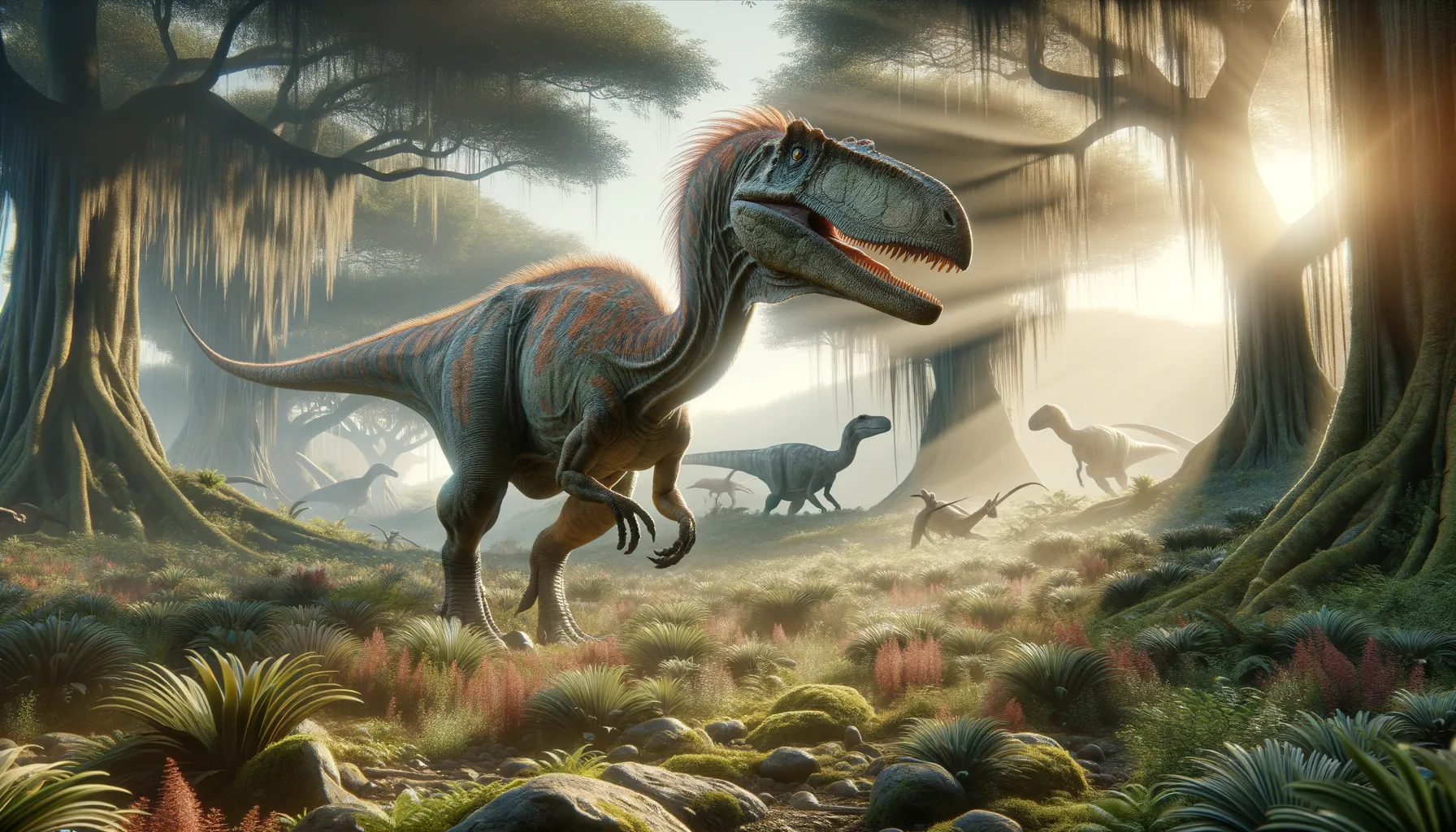
Sahaliyania
A gentle giant of the Cretaceous landscape.
Period
Cretaceous
Length
About 20 to 26 feet long.
Height
Around 7 to 10 feet tall.
Weight
Approximately 2 to 4 tons.
Sahaliyania was a large herbivorous dinosaur from the Late Cretaceous period. It belonged to the hadrosaurid family, known for their duck-billed appearance. Residing in what is now northeastern China, its discovery added valuable insights into the diversity of dinosaurs in Asia. This dinosaur likely thrived in a rich ecosystem, using its specialized teeth to process tough plant material, contributing significantly to our understanding of herbivorous dinosaur diets.
Diet
Sahaliyania was a herbivore, primarily feeding on a variety of plants. Its flat, duck-billed mouth aided in tearing and grinding vegetation efficiently. It likely consumed ferns, leaves, and conifer needles prevalent in its environment.
Hunting
Being a herbivore, Sahaliyania did not hunt for food. It foraged and grazed, moving in herds to find abundant vegetation. Its social structure likely influenced movement patterns to minimize predator threats.
Environmental challenges
Living in a diverse ecosystem, Sahaliyania faced challenges such as fluctuating climates and competition for food with other herbivores. Predation from larger carnivorous dinosaurs also posed a threat, especially to juveniles. It relied on its size and herd behavior as primary defenses against these predators. Environmental changes during its time likely influenced the vegetation available, impacting its feeding habits.
Speed
Moderate pace, not particularly fast.
Lifespan
Estimated at around 30 to 40 years.
First discovery
First discovered in 2008 in northeastern China.
Fun Facts
- Sahaliyania was a type of dinosaur called a hadrosaur, known for having a duck-billed snout.
- This dinosaur lived during the Late Cretaceous period, about 70 million years ago.
- Sahaliyania was a plant-eater, feeding on the lush vegetation of its time.
- The name 'Sahaliyania' comes from the Manchu word for 'black', referencing the region in China where its fossils were first discovered.
- It is believed that Sahaliyania might have lived in herds, similar to other hadrosaurs.
- Sahaliyania had a unique cranial crest that may have been used for communication or display among its kind.
Growth and Development
Sahaliyania likely experienced rapid growth in its early years, reaching full size to deter predators. It grew steadily, utilizing abundant plant resources to sustain its large body. Its development included changing tooth structures to adapt to varying plant material as it matured. This growth process helped it to efficiently process fibrous plants, ensuring survival in its habitat.
Habitat
Sahaliyania inhabited lush floodplains and forests, which were rich in vegetation. The area was likely a warm and wet environment, supporting diverse plant life for grazing. Its habitat had ample water sources, sustaining both flora and fauna crucial for herbivorous dinosaurs. This environment provided both food and relative safety from larger predatory dinosaurs.
Interaction with other species
Sahaliyania shared its habitat with various other dinosaur species, including predators like theropods. Its herd behavior was a key strategy for protection and social interaction. Interspecies competition likely occurred for food resources, though the rich ecosystem may have mitigated major conflicts. It also co-existed with smaller species, contributing to the complex ecological balance.
Natural lifespan
The natural lifespan was about 30 to 40 years.
Reproduction
Sahaliyania likely reproduced by laying eggs in communal nesting sites, common among herbivorous dinosaurs. Parental care might have been present during early stages post-hatching, typical of herd animals. These nesting sites were likely chosen for their proximity to food sources and safety. Reproduction strategies would have included behaviors ensuring the survival of offspring in a challenging environment.
Social behaviour
Sahaliyania likely lived in herds, providing safety in numbers from predators. Social interactions within herds could have included cooperative foraging and offspring care. Herds moved together to exploit food resources efficiently while maintaining protection. Such behavior underscores its adaptive strategies for survival in a predator-rich environment.
Fossil locations
Fossils have been predominantly found in the northeastern region of China. These discoveries were significant in understanding the distribution of hadrosaurids in Asia. The specific sites have provided crucial information on the diverse ecosystems Sahaliyania thrived in. Fossil evidence has helped confirm its herbivorous nature and physical adaptations.
